Current developments (ugh) in shooting film
I promise the title will be the only photography-related pun of the post. 🤞🏻
As of this writing, I have had my new-to-me camera, a Canon Canonet QL17 GIII, for exactly 8 days. I am still somewhat in awe of the camera needing just three days to ship halfway around the world. Perhaps it's an Osaka thing, as Craig Mod's latest book also took just three days to arrive from Osaka. Or maybe it's a Japan thing? In any case, this 70s-era 35mm rangefinder is now in my possession, and I have enjoyed most of my time with it so far. The novelty will likely wear off at some point, but right now it's lacquered on thick.
One roll of film has been developed, with a second underway as of this writing. I neither have the skills nor the room to develop film at home1, so instead, I have trusted Schiller's with this responsibility2. My second roll should be available late Thursday, May 22 or early Friday, May 23, both as prints and as scans available by Dropbox. A Walgreen's exists about a mile away from my place, but seeing the general state of their photo department is enough to dissuade me from using their film services. Honestly, I am still surprised that Walgreen's and CVS still dedicate a decent chunk of their floor plan to photos, as it always seems like the least busy part of their stores.
The Canonet is a solid piece of metal, with very little space wasted on its body. The camera is smaller than my old Olympus OM-D E-M5, and if memory serves me right, feels heavier than the Nikon D50 I used as my first DSLR. You've got the 40mm lens, room for the roll of 35mm film, and a viewfinder, and nothing else. There is barely enough room to grip the camera comfortably, so to help me from dropping the camera, I bought the Cuff by Peak Design yesterday. I wish there were a wrist strap done up in a 70s camera strap pattern, but Peak Design3 isn't anything to sneeze at.
I deliberately chose a fixed-lens film camera because I didn't want to think about extra equipment. I know myself well enough to feel "unsatisfied" if I had a film SLR or rangefinder, as there'd always be one more lens just out of reach which would "complete" me. If I have just one lens with just one focal length, that's one less element to consider when composing the photo. Instead, I can concentrate on other elements such as focusing, which is unlike any of my DSLR's or mirrorless cameras. When you look through the viewfinder of a rangefinder camera, you'll see the middle portion has a small section with a split image. You will use your focus ring on the lens to line up these two split images. Once they have merged, your subject is in focus:

The view through the Canon's viewfinder is similar, though the center section is nowhere near as defined as in the above example. You can't see it in this photo, but there's a small yellow square in the middle of the viewfinder that acts as the split-image finder. This yellow square is not the easiest tool for lining up the split images, but it's doable, and the more I practice the better I'll get:
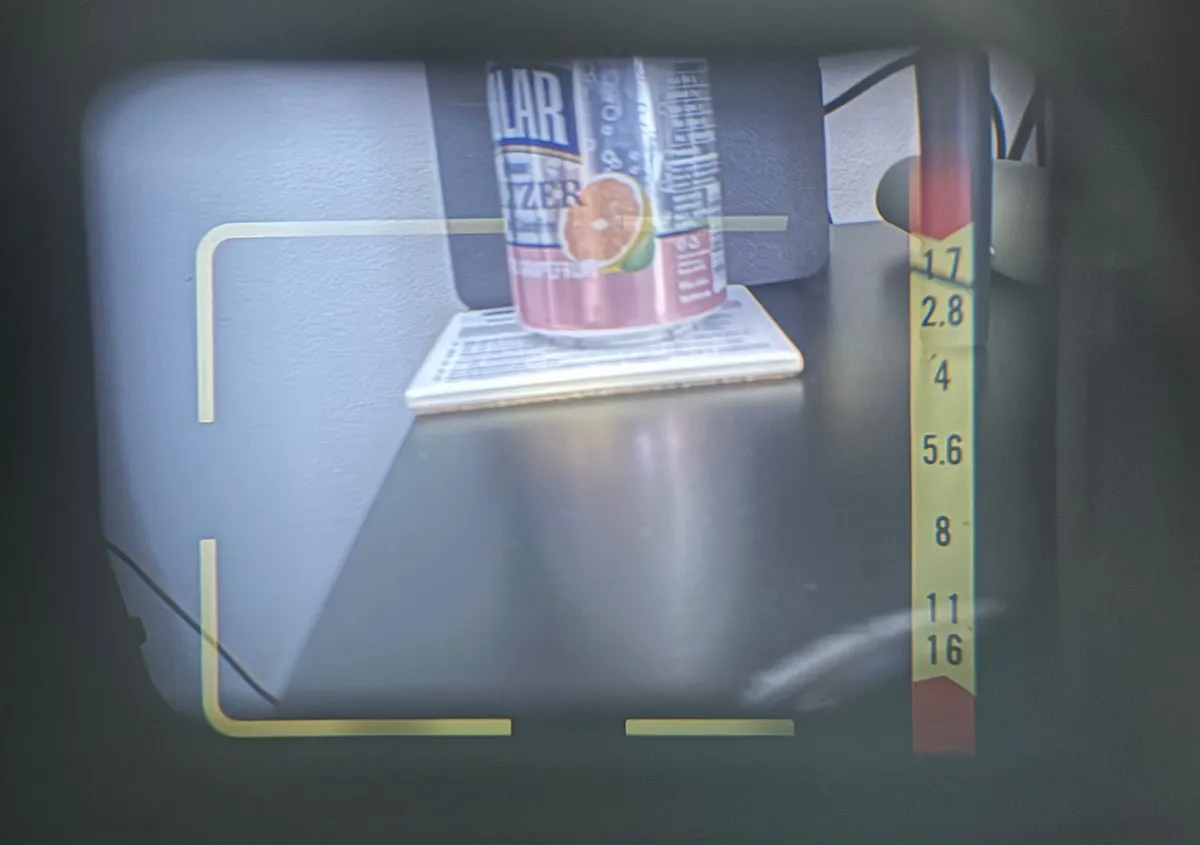
As for the practicing, well, here are some examples from my first roll:
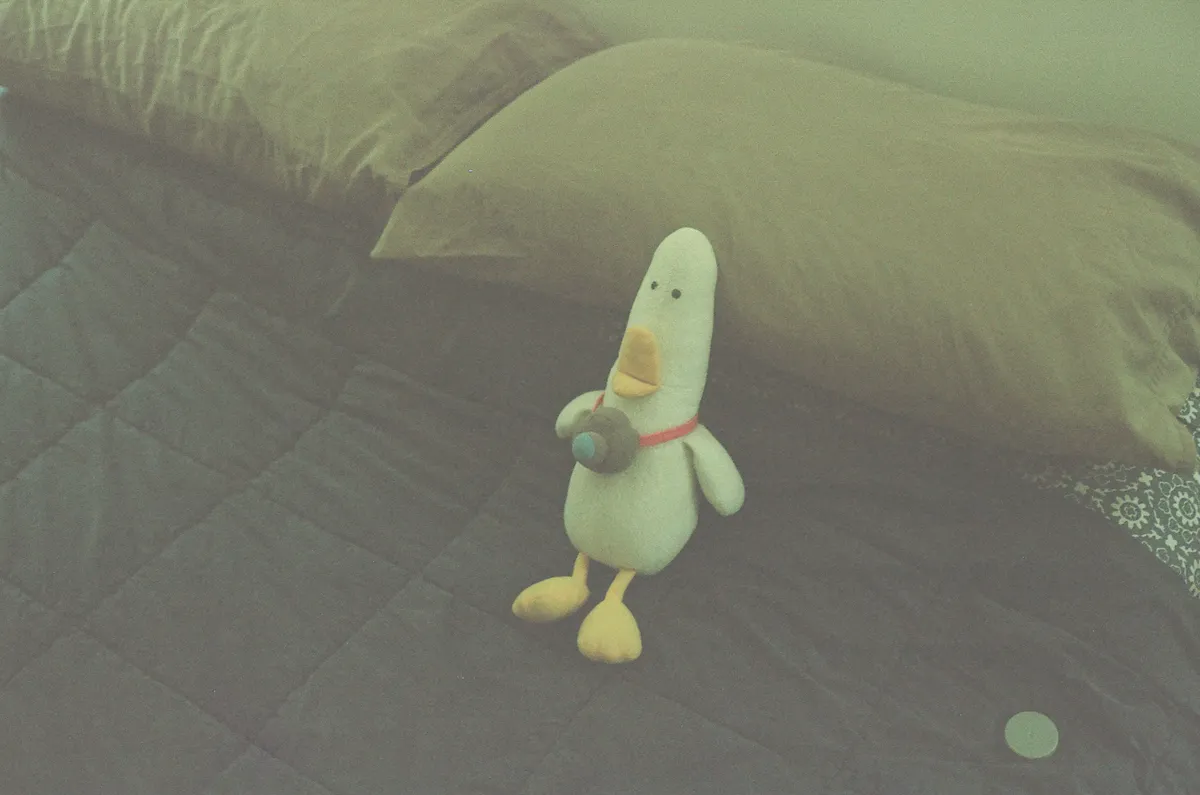
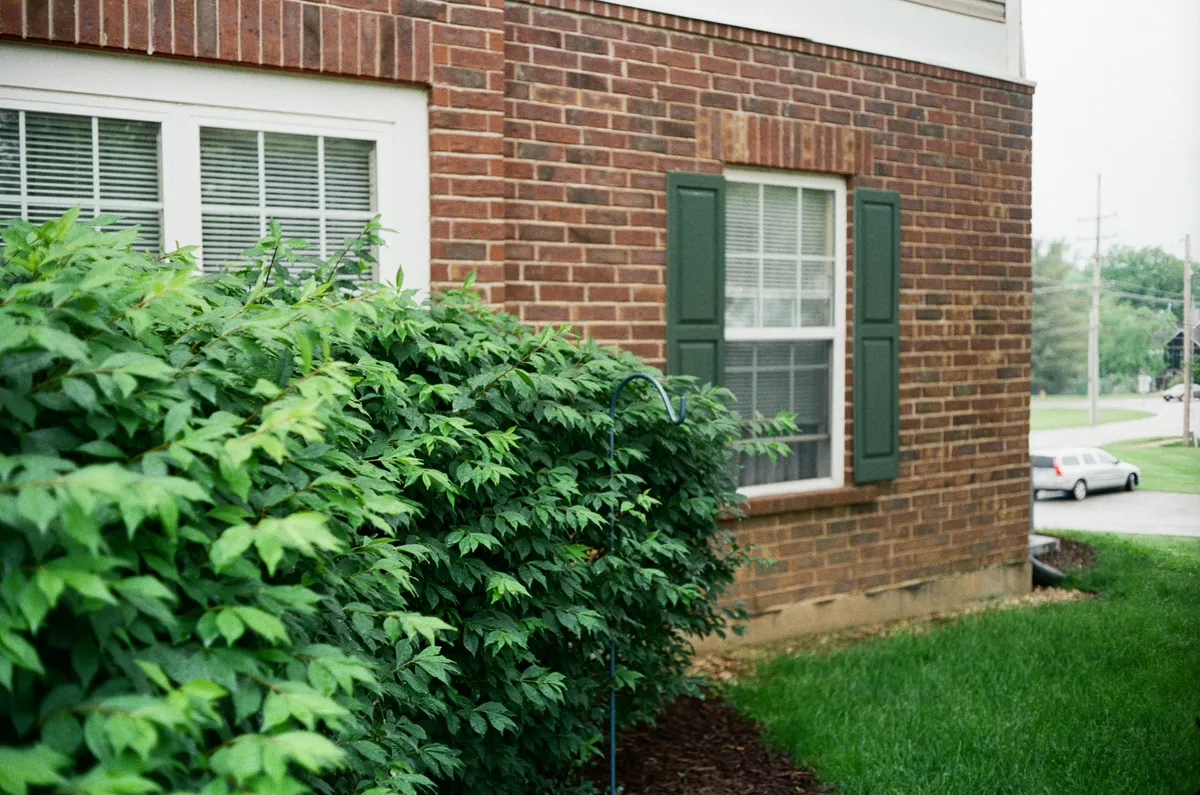
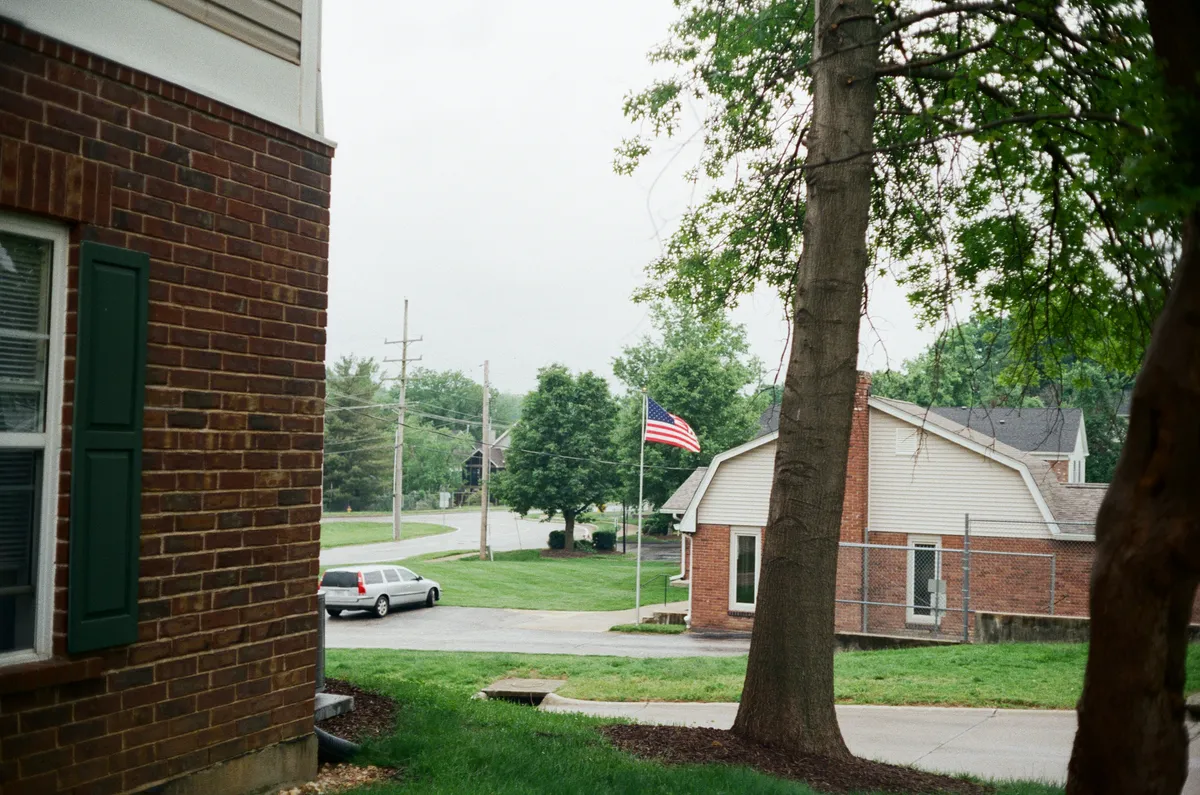
My biggest concern right now is with exposure. What The Duck looks rather dimly lit in the first photo, whereas the bushes and flag show up as slightly overexposed. I believe those photos were shot in A mode, which is different than on my digital cameras. For the Canon, I set the film speed immediately upon loading--in these photos, 400-speed film was used--and I leave it alone for the film's duration. Two rings around the lens allow me to set the aperture and shutter speed, though in A mode the camera will set the aperture for me, based off of readings from its built-in light meter. As I frame the subject, the aperture chosen by the camera in A mode will be shown on the right side of the viewfinder (as seen in the Polar sparkling water photo above). I can then make final adjustments to the shutter speed to obtain the aperture I want, then take the photo. If all is working well, I should have a properly-exposed and sharply focused photo.
I believe the light meter doesn't function, though. Every photo shot in A mode shows the aperture setting somewhere between f/1.7 and f/2.8. It doesn't matter the lighting conditions or shutter speed; the setting is the same. Whenever I partially depress the shutter, the measurement in the viewfinder moves slightly downward towards f/2.8, but then reverts back to the f/2.2ish setting. Either I am having remarkably consistent measurements with the light meter, or it isn't working.
As a form of comparison, the following photos were taken without the built-in light meter and with measurements taken from the Lightmate app on my iPhone:
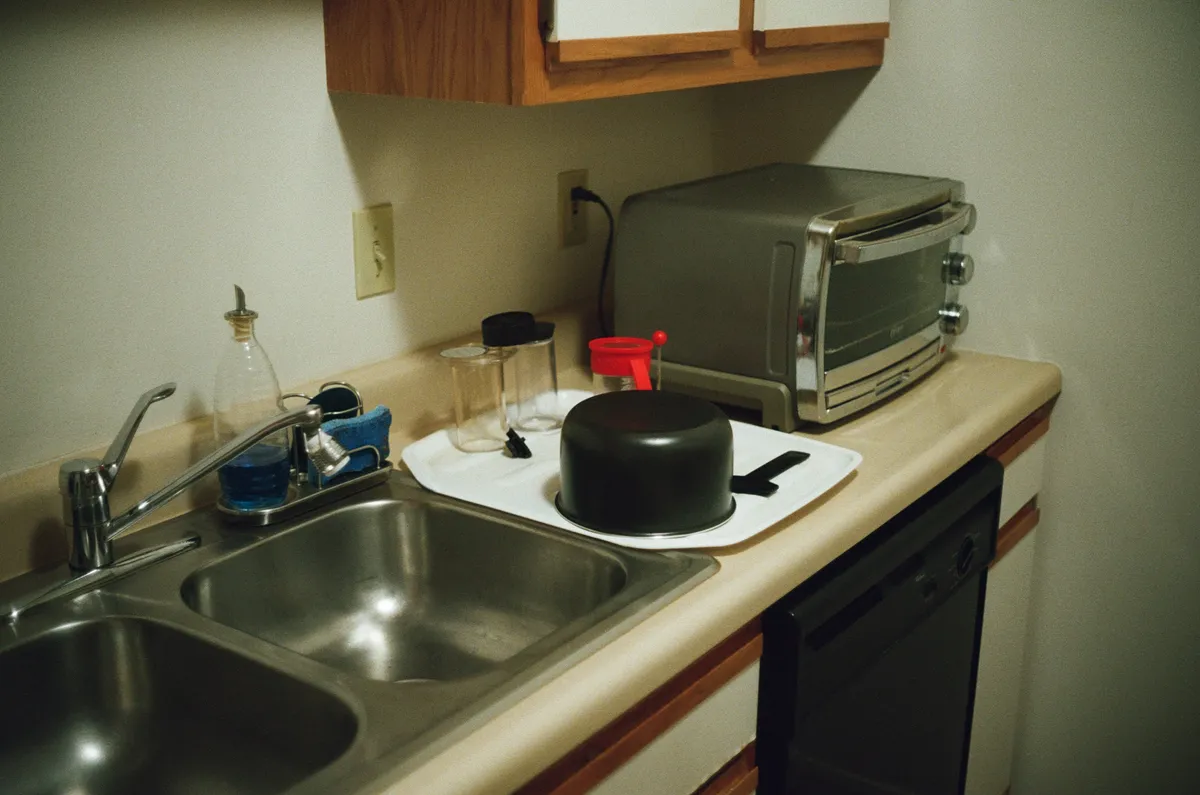
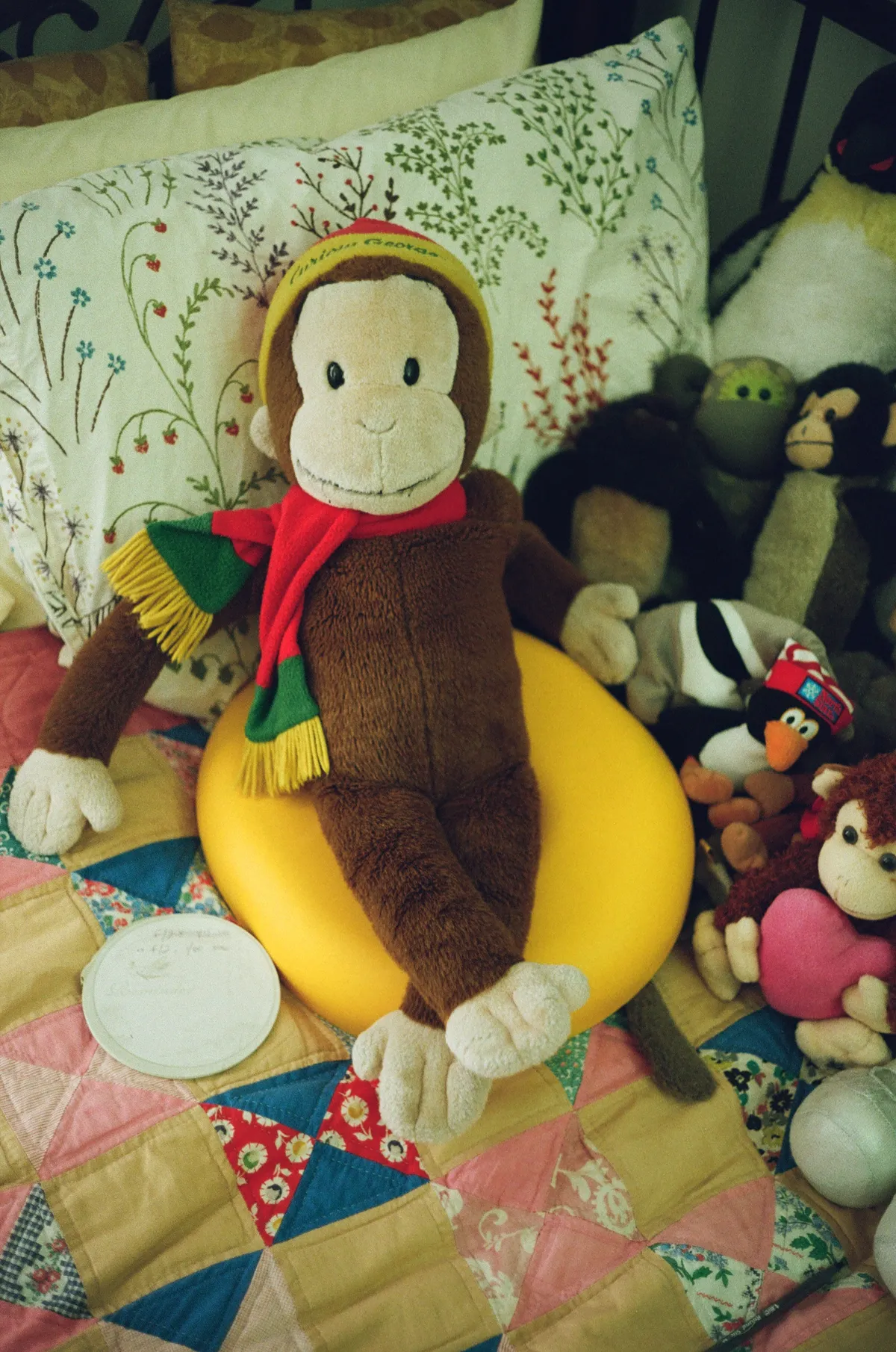
I wrote down the measurements for some of these photos on a notepad of circular paper, as seen next to Curious George. The colors and focus look great in the kitchen photo, as there's a lot more external lighting sources in that room. George also looks properly balanced in color and focus, as does the quilt he's resting upon--it helps that he's close by a window. The light meter on the Canon is the only electronic component of the camera, and requires a 1.35-volt battery. Back when this camera was manufactured, you could buy a mercury battery for the camera and let it run for years. Unfortunately, mercury has a tiny problem with toxicity, so those batteries don't exist anymore (or if they do, they're incredibly expensive and likely not legal to ship internationally). The replacement options are either a 1.5-volt alkaline battery with a voltage adapter to step down the power, or more expensive zinc-air batteries that run at the proper 1.35 volts. I bought the zinc-air batteries, which pass the camera's built-in battery check. Still, in spite of passing the battery check, something is just off with the light meter.
The good news? I don't really need the battery in the camera. I can use the Lightmate app, or any other light meter app for my iPhone, or I could really go old-school and buy a light meter if I felt like spending a lot of money. If I ditch the battery, I could have a fully mechanical film camera, and that's a tempting option.
I will likely have a follow-up post on Friday when the other set of photos come in. Stay tuned.
A running joke between me and L. has been about home brewing, as neither of us are allowed to indulge in it for beer (me) or kombucha (her). Thanks to our other hobbies, this running joke has a second dimension; she will not let her sewing projects grow to the point where they take over our spare room/home office, and in turn, I can't set this space up as a photo lab.↩
Man, if you would have told me 20 years ago I'd be excited about going to Schiller's, I would have wondered what was wrong with you. Schiller's used to have a reputation as a snooty, Canon-only shop that barely recognized or wanted to touch any other camera brand. Time and decreased competitiveness have changed that rep for the better.↩
I really have to restrain myself from spending far too much money at Peak Design. This is probably not just my problem. And while this isn't an ad for PD, I will heartily recommend their iPhone cases, as they are honestly the best ones I've used.↩